Opinion & Analysis
The Most Important Fitting Elements for Accuracy
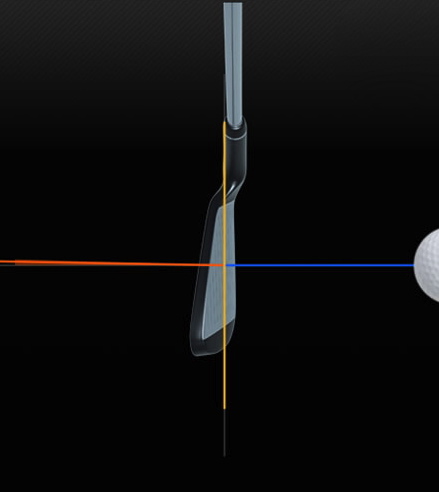
Golfers don’t enjoy the game when they struggle to keep the ball in play. There is no question the primary causes of inaccuracy result from errors in the golfer’s swing path and/or rotation of the club face back to the ball. However, through accurate clubfitting, it is possible to make changes in a number of specific fitting specifications of the clubs to visibly reduce the golfer’s misdirection tendencies.
It is also probable for changes in the some of the fitting specifications related to accuracy to be able to allow golfers to benefit more from lessons to more easily make changes in swing path and/or delivery of the face to the ball to result in accuracy improvement. Making swing changes in the path and face delivery change are much more difficult to accomplish when the clubs are too long and/or are the wrong total weight and swing weight for the golfer.
There is a limit to what clubfitting changes can do to achieve an improvement in accuracy. If the golfer’s slice or hook is too consistently severe, lessons to improve the golfer’s swing path and face delivery should always be the first priority. In general, if the golfer consistently slices or hooks the ball more than 30 yards of sideways movement, lessons should be always advised before a fitting change. But for golfers who slice, hook, push or pull the ball from 10 to 30 yards, accurate fitting for the specifications which do have a significant effect on accuracy will enable them to experience a definite level of accuracy improvement.
The fitting changes that can improve shot accuracy do not typically CURE or completely eliminate the inaccuracy of the golfer’s shots. They act to REDUCE the severity of the misdirection shots and tighten the overall range in shot dispersion for the golfer.
To do everything you can to improve shot accuracy through clubfitting changes, the following are the key fitting elements which have a bearing on accuracy. Through our research we have been able to identify which fitting specifications have a major effect (“A effect” specifications) and others which have a medium effect (“B effect” specifications). In addition, some of the fitting specifications show their effect for accuracy more with one segment of the clubs than with others. In the chart accompanying this article, we have identified which fitting specs have more of a major “A effect” on accuracy, which have a medium “B effect” and which have “no effect” on accuracy.
The most significant “A effect” fitting specifications which have a direct effect on shot accuracy are:
- Lie angle in the irons, wedges and putter.
- Face angle in the driver, fairway woods and hybrids.
- Club length, particularly so in the driver and fairway woods.
- The shaft weight, total weight and swing weight.
The “B effect” fitting specifications which have a little less of an effect, yet which still can bring about improvement in accuracy are:
- The face progression/offset, the center of gravity (CG) location.
- Lie angle in the driver and fairway woods.
- The torque, flex and bend profile of the shaft.
- Grip size.
- The set makeup selection of the clubs.
Click here to see what members are saying in the forums.
The A Effect: Fitting specifications for accuracy
1. Lie Angle
The higher the loft of the club head, the more the misdirection angle caused by an improperly fit lie to the golfer will translate into an off-line shot. The lower the loft of the club head, the less this is a visible factor for accuracy. Without question, every golfer needs to have each of their irons, wedges and yes, the putter correctly fit for lie angle for their physical stature, swing characteristics and posture/hands position through the ball. Without question, lie fitting must be done in one of the two dynamic lie fitting methods – either with the lie board or the ink on the back of the ball method. And the reason the putter lie is so important even though it has the lowest loft of all club heads is because the target for the putt is so small (4 1/4-inch small!).
2. Face Angle
Proper fitting of the face angle of the driver, fairway woods and hybrids is the number one most effective means to reduce the golfer’s misdirection tendencies with the driver, woods and hybrids to bring about visible improvement in accuracy. Using a more closed face angle to reduce the severity of a slice or a more open face angle to reduce the amount of hook is not a “Band-Aid” for the golfer’s swing path and face delivery errors. A change in the face angle acts as a direct 1:1 correction for the number of degrees the golfer leaves the face open or closed at the moment of impact. How much does a face angle change correct for a slice or hook? Based on a carry distance of 200 yards, a 1-degree change in the face angle from the face angle the golfer has results in a 4- to 5-yard reduction in the slice or hook. For a golfer with a 20- to 30-yard slice or hook, a face angle that is 2 to 3 degrees more closed/open THAN WHAT THEY CURRENTLY PLAY can easily be the difference between the ball being in play or out of play.
3. Club Length
The longer the length of the club, the higher will be its assembled club MOI. We’re not talking about the MOI of the head itself — we’re talking about the MOI of the fully assembled club. The higher the MOI of the club, the more load the club places on the golf swing for the golfer to overcome to be able to swing the club on the proper path and rotate the face back around to impact. The more load the club places on the swing, the more the weaker elements of the swing are subject to becoming more inconsistent.
For golfers with an outside-in path, a forceful transition move, a faster tempo and an earlier release, a longer-length driver and fairway woods will contribute to inaccuracy of the shot.
The reason that longer length is not as much of an accuracy problem with the irons is because irons as a group are much shorter in relation to the driver and fairway woods. In addition, few golfers play irons that are more than 1-inch longer than the old standard of 30-plus years ago. Not so with drivers where today’s “standard length” is 2 to 3 inches longer than the driver length standard of 30-plus years ago. That means that few golfers end up playing with irons that are more than 0.5 to to 1 inch off from what they should be playing. Today’s 45.5 to 46.5-inch driver lengths and 43.5-inch 3 wood lengths seen on so many retail models are much longer than what most golfers have the ability to control.
4. The Shaft Weight, the Total Weight and the Swing Weight
In combination together, the shaft weight, total weight and swingweight/MOI of the clubs can definitely be an “A Effect” for accuracy improvement. If the overall weight or feel of the clubs is too light or too heavy for the golfer’s transition force, downswing tempo, strength and individual perception for weight FEEL, more severe mistakes can be made in the swing path, release and on-center hit proficiency that will affect accuracy.
Of these, the swingweight/MOI (the headweight FEEL) is the most important contributor for effect on accuracy. The reason is because the swing weight/MOI can be increased to offset the effect of a shaft weight/total weight that is too light for the golfer. On the other hand, if the shaft weight/total weight is too heavy for the golfer, no swing weight/MOI adjustment can overcome the effect of a too heavy shaft weight/total weight on accuracy.
Remember, the weight of the shaft is the number one controlling factor for the total weight, so when you are fit for the shaft weight, you are covering 95 percent of the fitting for total weight at the same time. Hence from a fitting standpoint, shaft weight and total weight are considered the same thing. Only when an excessively heavy or extremely light grip is used does the weight of the grip show a noteworthy effect on the total weight of the clubs.
These combined “weights” of the golf club have to be fit to match each golfer’s unique combination of transition force, downswing tempo, strength and any personal preference for what the golfer perceives to be the “right weight feel.” If the weighting of the clubs is too light, either in total weight or head weight feel (swing weight/MOI), golfers with a stronger transition, faster tempo and greater strength can get too quick with their swing tempo and greater inaccuracy can result from the golfer not being able to achieve a consistent swing path and/or delivery of the face to impact.
Conversely, if the weighting of the clubs is too heavy in either the total weight or swing weight for the golfer’s transition, tempo, strength or feel, the golfer’s with the consistency of path and face angle delivery to the ball will also suffer. Either way, if the weighting of the clubs is matched properly to the golfer’s transition, tempo, strength and feel preference, the golfer can improve the consistency of the accuracy of the shot.
Click here to see what members are saying in the forums.
The B Effect: Fitting Specifications for Accuracy
The concept of the B Effect specifications on each of the game improvement factors is to say that on their own, each of these specifications may not bring about much more than a subtle improvement. However, if any of the B Effect specifications are poorly matched to the golfer in his/her current clubs, it then is more likely the change in the B Effect specifications can offer visible improvement. However, in combination, the proper fitting of several to all of the B Effect specifications can add up to be almost as important as some of the A Effect specs on a game improvement factor.
1. The Face Progression/Offset and the Center of Gravity (CG) location in the club head
The chance for the FP/Offset or CG to bring about any improvement in accuracy depends heavily on whether these elements were very poorly matched to the golfer’s swing characteristics in the present or previous clubs. Less face progression/more offset as well as a lower CG can generate a slightly higher ball flight with more spin, which for some golfers may combine with an open or closed face at impact to accentuate the amount of hook or slice spin on the ball.
Conversely, more face progression/less offset as well as a higher CG can generate a slightly lower ball flight with less spin, which for some golfers may combine with an open or closed face at impact to slightly reduce the amount of hook or slice spin on the ball. Seriously though, these are slight factors at best which border on being no factor for accuracy for many golfers.
2. Lie Angle in the Driver and Fairway Woods
The higher the loft, the more an ill-fit lie angle contributes to misdirection on the shot. Even though the driver and fairway woods are hit farther than the irons, because of their much lower loft, there is so much less of a misdirection angle of the face that the longer distance these clubs are hit does not cause a less than perfect driver/fairway wood lie to contribute very much to inaccuracy.
However, it should be said that for many golfers, modern fairway wood lies are too upright and can affect the solidness of the shot as well as a smooth travel of the sole on the ground through impact. As such, if the hosel design of the fairway wood will allow the lie to be adjusted to better fit the golfer and allow the sole to travel level through impact, by all means that should be done as a part of the fitting process.
3. The Torque, Flex and Bend Profile of the Shaft
In modern shaft design, 98 percent of the time the torque is designed to coordinate with the overall stiffness (Flex) of the shaft. In other words, you’re not going to find a 5-degree or 6-degree torque in an X-flex shaft and you’re rarely going to see a 2-degree or 3-degree torque in an A- or L-flex shaft.
Shaft designers realize that a substantial part of the swing characteristics that cause a shaft to bend more (the transition force to start the downswing along with the club head speed) are also the swing elements that cause the shaft to twist (torque). Hence when the overall stiffness (flex) is fit correctly to the golfer, rarely will there be a case when the flex is fit correctly but the torque is far enough off to be a cause of misdirection for the shot. Occasionally with VERY aggressive swingers, but not very often. From a shaft feel standpoint, yes, there are golfers who can detect the stiffer feel that comes from a lower torque, but from a pure accuracy standpoint, 98 percent of the time the golfer is correctly fit for the flex and the bend profile of the shaft, he will also be properly fit for the torque from the standpoint of accuracy.
There are some golfers who swear that playing too stiff or too flexible of a shaft will have a significant effect on accuracy. It is true that if a golfer with a later-to-late release were playing a shaft that was two full flexes too stiff or too flexible for his swing, there would be a visible change in the flight shape of the shot — higher and with a little more tendency for a draw. But even if a late-release golfer were to use a shaft that would be two full flexes softer than what he needed, the result would only be a visible increase in a draw only if the golfer’s natural flight tendency was to draw the ball. But rarely would the increase in draw be enough to hit the ball out of play.
The reason some golfers experience an accuracy problem playing with the wrong flex is chiefly because a feel-sensitive golfer’s perception of poor flex feel can cause the golfer to make swing errors/changes that result in a drop in accuracy. A bad feeling shaft can cause some golfers with a fine sense of perception to swing differently than they will when playing a shaft that feels just right. But this is not the case with the majority of golfers who do not have a specific perception of bending feel for the shaft.
The primary reason for properly fitting a golfer for the flex and bend profile of the shaft is to allow the flex/bend profile to combine with the loft of the club head to optimize the golfer’s launch angle, spin and angle of descent. In addition, as previously stated, proper flex and bend profile fitting is also important for fitting the golfer with the right bending FEEL that matches his preference for that type of feel. If the shaft flex and bend profile are fit properly for launch angle, spin and bending feel, it will have no significant effect on accuracy.
4. Grip Size
It is simply not true that all golfers who play with a grip that is too small will pull or hook the ball more, and all golfers who play with too large of a grip will push or slice the ball more because of the way the ill-fit grip size affects the golfer’s release. However, it is true that if the grip size does not feel comfortable to the golfer, this can translate into adversely affecting the golfer’s swing tempo, swing path and release, which in turn can affect the accuracy of the shot. Bottom line: Fit every golfer for a comfortable grip size and any possibility of the grip affecting the accuracy will disappear.
5. Set Makeup
How could the set makeup have an effect on accuracy? By replacing hard-to-hit clubs the golfer may be hitting more off line with clubs that are easier to hit by virtue of their design. That will result in better accuracy for the same distance.
For example, it is not uncommon for a golfer with an outside-in path and fast swing tempo to hit the fairway woods with some degree of inaccuracy, but be able to hit hybrids the same distance and more accurately because of the shorter length of the hybrids.
Conclusion
For the driver, fairway woods and hybrids, the key elements for maximum accuracy in the fitting process are the length, face angle and the combination of the shaft weight/total weight/swingweight (MOI) of the clubs. Within these three fitting elements, many golfers who presently suffer from misdirection problems most definitely can achieve a visible improvement in accuracy.
For the irons, the key elements for maximum accuracy in the fitting process are the lie angles along with the combination of the shaft weight/total weight/swingweight (MOI) of the clubs.
Get these fitting specifications perfectly matched to the golfer’s swing characteristics and pretty much everything that can be done to maximize the golfer’s shot accuracy will have been done. After that, if the golfer still suffers from a significant misdirection problem, the remedy will be lessons to work on improving the golfer’s alignment, posture, swing path and delivery of the face to impact.
Click here to read Tom Wishon’s series on the proper way to select a shaft
Opinion & Analysis
The 2 primary challenges golf equipment companies face

As the editor-in-chief of this website and an observer of the GolfWRX forums and other online golf equipment discourse for over a decade, I’m pretty well attuned to the grunts and grumbles of a significant portion of the golf equipment purchasing spectrum. And before you accuse me of lording above all in some digital ivory tower, I’d like to offer that I worked at golf courses (public and private) for years prior to picking up my pen, so I’m well-versed in the non-degenerate golf equipment consumers out there. I touched (green)grass (retail)!
Complaints about the ills of and related to the OEMs usually follow some version of: Product cycles are too short for real innovation, tour equipment isn’t the same as retail (which is largely not true, by the way), too much is invested in marketing and not enough in R&D, top staffer X hasn’t even put the new driver in play, so it’s obviously not superior to the previous generation, prices are too high, and on and on.
Without digging into the merits of any of these claims, which I believe are mostly red herrings, I’d like to bring into view of our rangefinder what I believe to be the two primary difficulties golf equipment companies face.
One: As Terry Koehler, back when he was the CEO of Ben Hogan, told me at the time of the Ft Worth irons launch, if you can’t regularly hit the golf ball in a coin-sized area in the middle of the face, there’s not a ton that iron technology can do for you. Now, this is less true now with respect to irons than when he said it, and is less and less true by degrees as the clubs get larger (utilities, fairways, hybrids, drivers), but there remains a great deal of golf equipment truth in that statement. Think about it — which is to say, in TL;DR fashion, get lessons from a qualified instructor who will teach you about the fundamentals of repeatable impact and how the golf swing works, not just offer band-aid fixes. If you can’t repeatably deliver the golf club to the golf ball in something resembling the manner it was designed for, how can you expect to be getting the most out of the club — put another way, the maximum value from your investment?
Similarly, game improvement equipment can only improve your game if you game it. In other words, get fit for the clubs you ought to be playing rather than filling the bag with the ones you wish you could hit or used to be able to hit. Of course, don’t do this if you don’t care about performance and just want to hit a forged blade while playing off an 18 handicap. That’s absolutely fine. There were plenty of members in clubs back in the day playing Hogan Apex or Mizuno MP-32 irons who had no business doing so from a ballstriking standpoint, but they enjoyed their look, feel, and complementary qualities to their Gatsby hats and cashmere sweaters. Do what brings you a measure of joy in this maddening game.
Now, the second issue. This is not a plea for non-conforming equipment; rather, it is a statement of fact. USGA/R&A limits on every facet of golf equipment are detrimental to golf equipment manufacturers. Sure, you know this, but do you think about it as it applies to almost every element of equipment? A 500cc driver would be inherently more forgiving than a 460cc, as one with a COR measurement in excess of 0.83. 50-inch shafts. Box grooves. And on and on.
Would fewer regulations be objectively bad for the game? Would this erode its soul? Fortunately, that’s beside the point of this exercise, which is merely to point out the facts. The fact, in this case, is that equipment restrictions and regulations are the slaughterbench of an abundance of innovation in the golf equipment space. Is this for the best? Well, now I’ve asked the question twice and might as well give a partial response, I guess my answer to that would be, “It depends on what type of golf you’re playing and who you’re playing it with.”
For my part, I don’t mind embarrassing myself with vintage blades and persimmons chasing after the quasi-spiritual elevation of a well-struck shot, but that’s just me. Plenty of folks don’t give a damn if their grooves are conforming. Plenty of folks think the folks in Liberty Corner ought to add a prison to the museum for such offences. And those are just a few of the considerations for the amateur game — which doesn’t get inside the gallery ropes of the pro game…
Different strokes in the game of golf, in my humble opinion.
Anyway, I believe equipment company engineers are genuinely trying to build better equipment year over year. The marketing departments are trying to find ways to make this equipment appeal to the broadest segment of the golf market possible. All of this against (1) the backdrop of — at least for now — firm product cycles. And golfers who, with their ~15 average handicap (men), for the most part, are not striping the golf ball like Tiger in his prime and seem to have less and less time year over year to practice and improve. (2) Regulations that massively restrict what they’re able to do…
That’s the landscape as I see it and the real headwinds for golf equipment companies. No doubt, there’s more I haven’t considered, but I think the previous is a better — and better faith — point of departure when formulating any serious commentary on the golf equipment world than some of the more cynical and conspiratorial takes I hear.
Agree? Disagree? Think I’m worthy of an Adam Hadwin-esque security guard tackle? Let me know in the comments.
@golfoncbs The infamous Adam Hadwin tackle ? #golf #fyp #canada #pgatour #adamhadwin ? Ghibli-style nostalgic waltz – MaSssuguMusic
Podcasts
Fore Love of Golf: Introducing a new club concept

Episode #16 brings us Cliff McKinney. Cliff is the founder of Old Charlie Golf Club, a new club, and concept, to be built in the Florida panhandle. The model is quite interesting and aims to make great, private golf more affordable. We hope you enjoy the show!
Opinion & Analysis
On Scottie Scheffler wondering ‘What’s the point of winning?’

Last week, I came across a reel from BBC Sport on Instagram featuring Scottie Scheffler speaking to the media ahead of The Open at Royal Portrush. In it, he shared that he often wonders what the point is of wanting to win tournaments so badly — especially when he knows, deep down, that it doesn’t lead to a truly fulfilling life.
View this post on Instagram
“Is it great to be able to win tournaments and to accomplish the things I have in the game of golf? Yeah, it brings tears to my eyes just to think about it because I’ve literally worked my entire life to be good at this sport,” Scheffler said. “To have that kind of sense of accomplishment, I think, is a pretty cool feeling. To get to live out your dreams is very special, but at the end of the day, I’m not out here to inspire the next generation of golfers. I’m not out here to inspire someone to be the best player in the world, because what’s the point?”
Ironically — or perhaps perfectly — he went on to win the claret jug.
That question — what’s the point of winning? — cuts straight to the heart of the human journey.
As someone who’s spent over two decades in the trenches of professional golf, and in deep study of the mental, emotional, and spiritual dimensions of the game, I see Scottie’s inner conflict as a sign of soul evolution in motion.
I came to golf late. I wasn’t a junior standout or college All-American. At 27, I left a steady corporate job to see if I could be on the PGA Tour starting as a 14-handicap, average-length hitter. Over the years, my journey has been defined less by trophies and more by the relentless effort to navigate the deeply inequitable and gated system of professional golf — an effort that ultimately turned inward and helped me evolve as both a golfer and a person.
One perspective that helped me make sense of this inner dissonance around competition and our culture’s tendency to overvalue winning is the idea of soul evolution.
The University of Virginia’s Division of Perceptual Studies has done extensive research on reincarnation, and Netflix’s Surviving Death (Episode 6) explores the topic, too. Whether you take it literally or metaphorically, the idea that we’re on a long arc of growth — from beginner to sage elder — offers a profound perspective.
If you accept the premise literally, then terms like “young soul” and “old soul” start to hold meaning. However, even if we set the word “soul” aside, it’s easy to see that different levels of life experience produce different worldviews.
Newer souls — or people in earlier stages of their development — may be curious and kind but still lack discernment or depth. There is a naivety, and they don’t yet question as deeply, tending to see things in black and white, partly because certainty feels safer than confronting the unknown.
As we gain more experience, we begin to experiment. We test limits. We chase extreme external goals — sometimes at the expense of health, relationships, or inner peace — still operating from hunger, ambition, and the fragility of the ego.
It’s a necessary stage, but often a turbulent and unfulfilling one.
David Duval fell off the map after reaching World No. 1. Bubba Watson had his own “Is this it?” moment with his caddie, Ted Scott, after winning the Masters.
In Aaron Rodgers: Enigma, reflecting on his 2011 Super Bowl win, Rodgers said:
“Now I’ve accomplished the only thing that I really, really wanted to do in my life. Now what? I was like, ‘Did I aim at the wrong thing? Did I spend too much time thinking about stuff that ultimately doesn’t give you true happiness?’”
Jim Carrey once said, “I think everybody should get rich and famous and do everything they ever dreamed of so they can see that it’s not the answer.”
Eventually, though, something shifts.
We begin to see in shades of gray. Winning, dominating, accumulating—these pursuits lose their shine. The rewards feel more fleeting. Living in a constant state of fight-or-flight makes us feel alive, yes, but not happy and joyful.
Compassion begins to replace ambition. Love, presence, and gratitude become more fulfilling than status, profits, or trophies. We crave balance over burnout. Collaboration over competition. Meaning over metrics.
Interestingly, if we zoom out, we can apply this same model to nations and cultures. Countries, like people, have a collective “soul stage” made up of the individuals within them.
Take the United States, for example. I’d place it as a mid-level soul: highly competitive and deeply driven, but still learning emotional maturity. Still uncomfortable with nuance. Still believing that more is always better. Despite its global wins, the U.S. currently ranks just 23rd in happiness (as of 2025). You might liken it to a gifted teenager—bold, eager, and ambitious, but angsty and still figuring out how to live well and in balance. As much as a parent wants to protect their child, sometimes the child has to make their own mistakes to truly grow.
So when Scottie Scheffler wonders what the point of winning is, I don’t see someone losing strength.
I see someone evolving.
He’s beginning to look beyond the leaderboard. Beyond metrics of success that carry a lower vibration. And yet, in a poetic twist, Scheffler did go on to win The Open. But that only reinforces the point: even at the pinnacle, the question remains. And if more of us in the golf and sports world — and in U.S. culture at large — started asking similar questions, we might discover that the more meaningful trophy isn’t about accumulating or beating others at all costs.
It’s about awakening and evolving to something more than winning could ever promise.



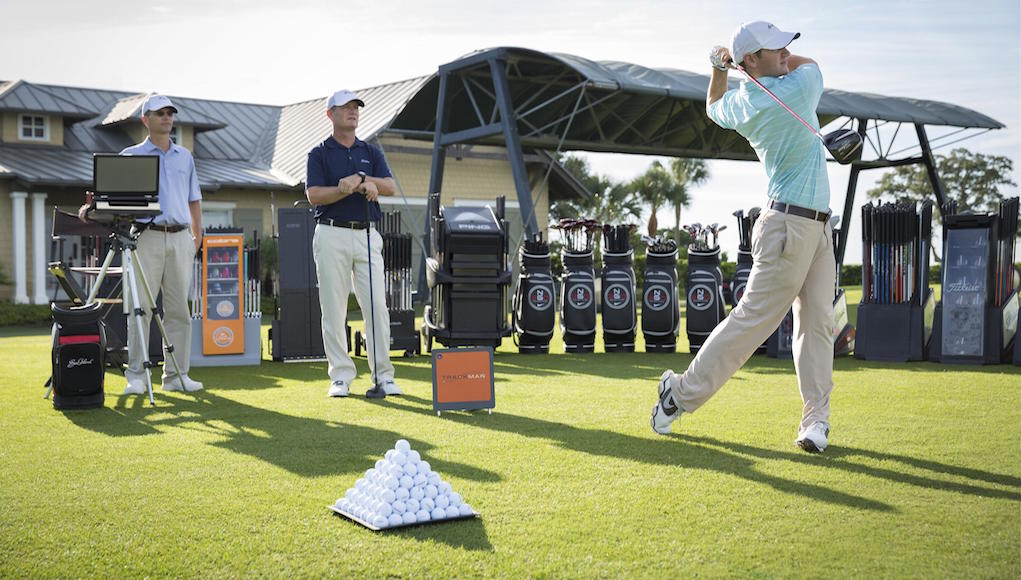
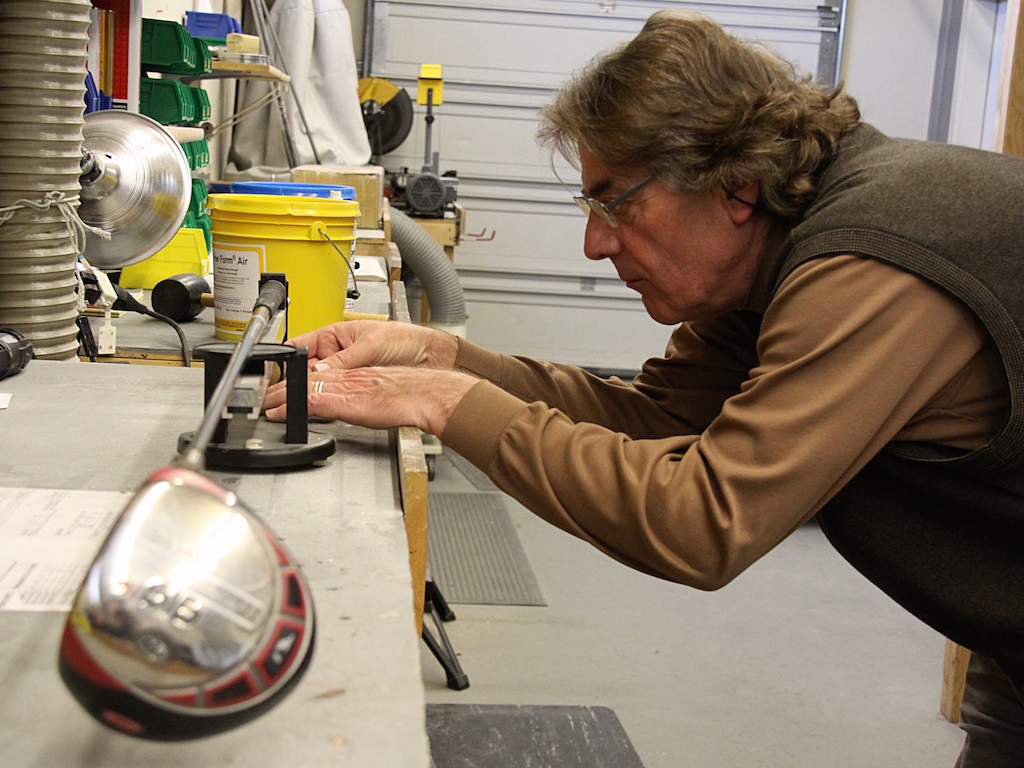
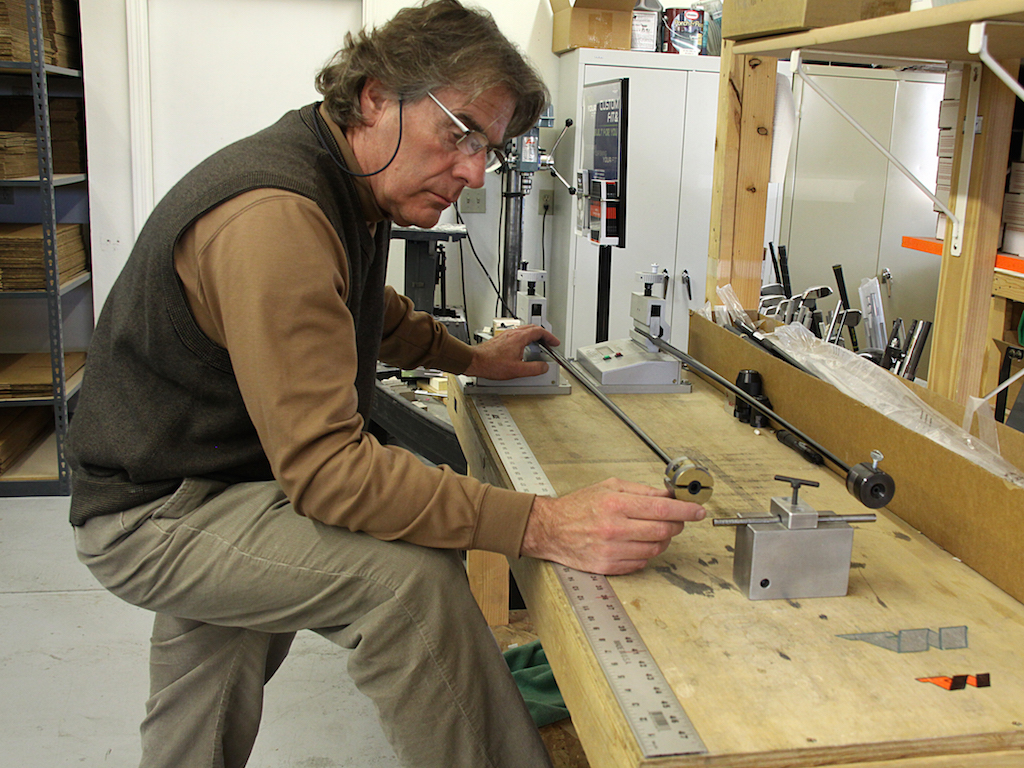
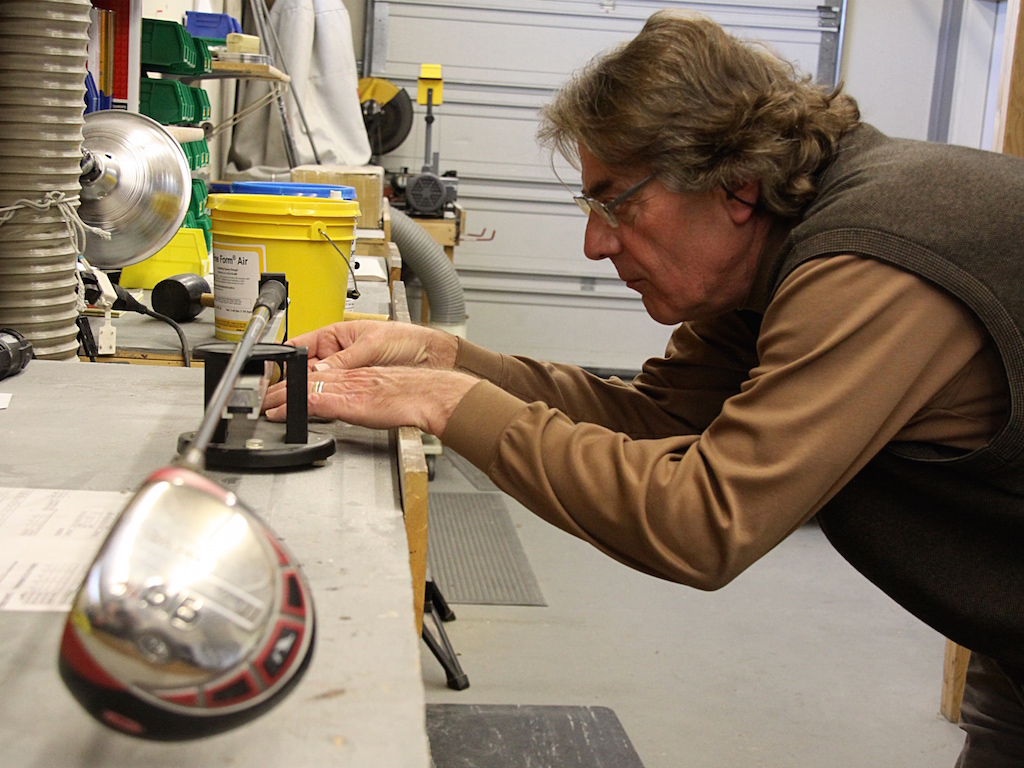
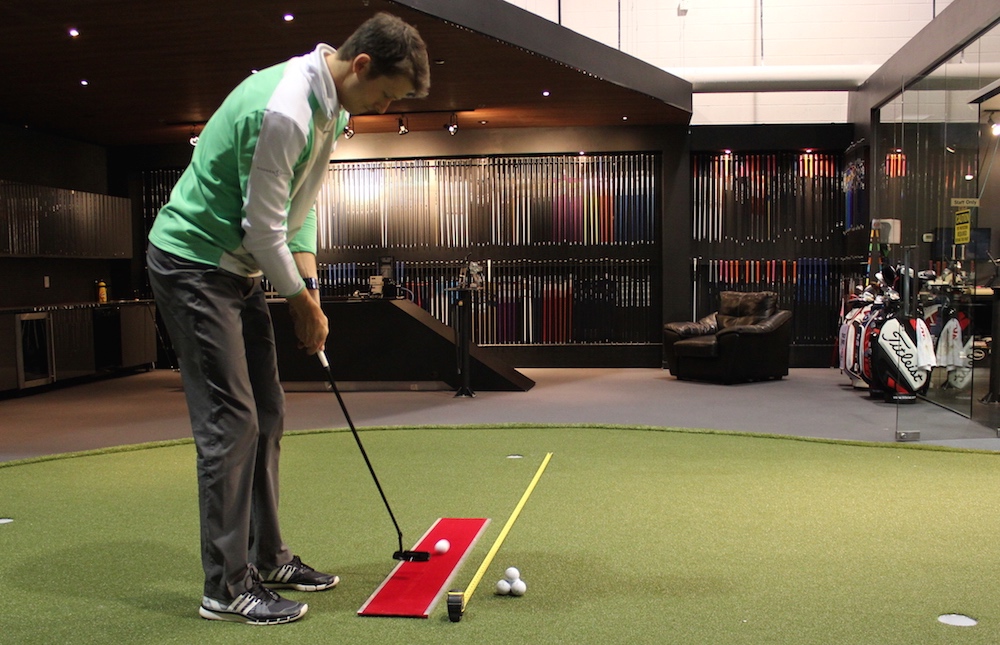
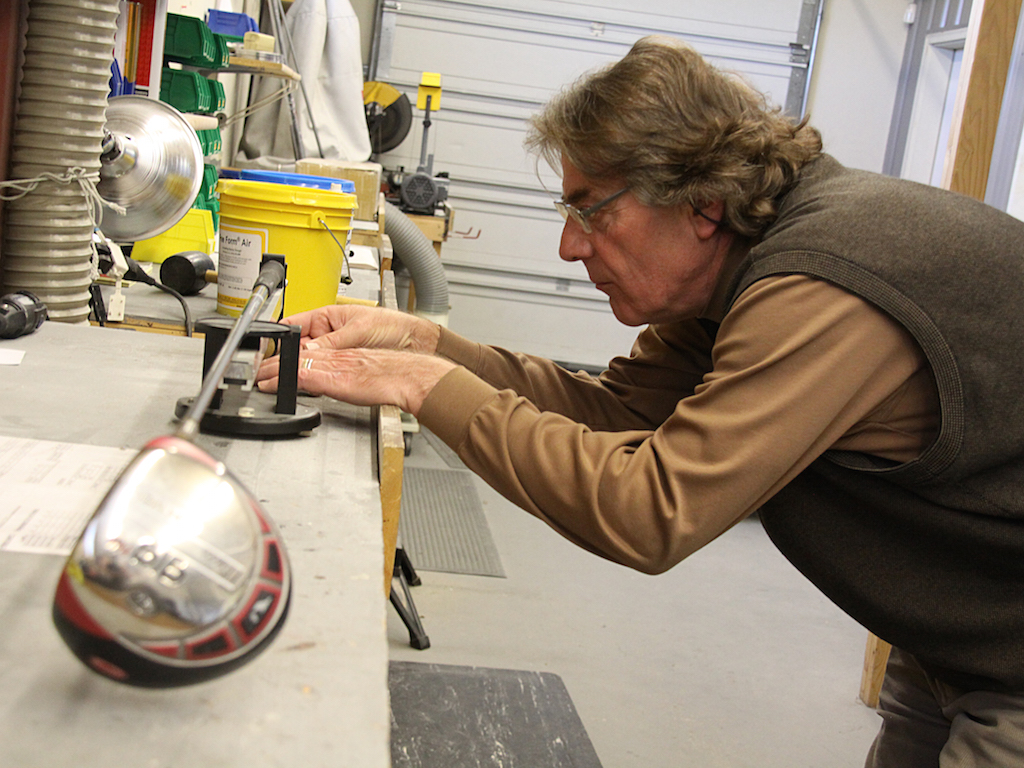








Dennis
Aug 14, 2013 at 10:46 am
Hello Tom,
An insighful and interesting article, thank you.
Can you tell me which factor(s) would have the most affect on off-center hits on irons.
Is it the “A effect” items: Lie angle, shaft weight/total weight, & length that would affect this in irons?
If so is there any one of these in particlur that would affect it most?
Or are there any other factors that would affect this?
I assume club length would have a bearing from its very nature, but I have seen in irons where the shaft is slightly shorter that the ball strikes closer to the heel (and not from the center), which i would have assumed the opposite would happen (i.e. strikes closer to the toe).
So I wonder could there be something else thats having a bearing then, like lie angle or something else.
And if so how it affects off-center strikes in this way?
I have tested it myself and seen smash numbers go from 1.33 to 1.44 from one club setup to another.
But even away from monitor numbers, its visible to see the ball mark on the face closer to the heel on one iron brand/set-up than another and while some manipulation by the player can get it back on center, its not as “automatic” as with their own irons or with a specific iron that suits them.
Thank you for the excellent information as always and hope i have not asked too many questions together 🙂
Dennis.
TCMPGolf
Jun 6, 2013 at 6:31 am
Tom-
Great article and insight. Everyone needs to READ the entire article word for word before making ill-informed comments about your words of wisdom. It’s all there, some are just skimming through this and posing questions based on information already covered/accounted for.
Good job and I look forward to reading the remainder of the series.
TCMP
Hunter
Jun 5, 2013 at 11:18 am
Tom,
Can you explain how to find the right weight shaft? I can feel the difference between light and heavy shafts obviously but I don’t know how to pick what is best for me other than to use my “gut”. I have always felt that I liked lighterweight shafts but I am playing a AD DI-7x that I think weighs 75 grams in my driver because it fits my launch characteristics well.
Thanks!
Tom Wishon
Jun 7, 2013 at 10:03 am
HUNTER:
The weight of the shaft is the number one controlling factor for the TOTAL WEIGHT of the clubs. Shaft weight also has an influence on the swingweight (headweight feel) of the clubs, though it is possible to make a club be different swingweights after changing from heavy to light or light to heavy in the shaft weight.
As mentioned in the article, these two weights of the club must be matched to the golfer’s natural or acquired sense of swing tempo, timing, rhythm, strength and feel. If the club has too light of a total weight or too light of a swingweight for the golfer’s swing tempo, timing, rhythm, strength and feel, he will get too quick and have problems being consistent with his swing. if the club has too heavy of a total weight or too heavy of a swingweight for the golfer’s swing tempo, timing, rhythm, strength and feel, he will labor more with the club trying to achieve his most consistent swing rhythm.
Fighting your tempo results in more off center hits and a broadening of variation in your swing path and delivery of the face to the ball – overall inconsistency.
Problem is, there is no measurement and no empirical test that can be performed to determine precisely how heavy or how light the shaft needs to be to match well to each golfer’s own sense of swing tempo/timing/rhythm. We use these guidelines to start – strong, forceful transition move, aggressive downswing golfer uses heavier weight shafts, and vice versa – but it has to be done on a bit of a trial and error basis.
You’ll know when the shaft weight/total weight AND the swingweight are right for you when you do not have conscious thoughts about needing to slow down or swing smoother or swing more aggressively. When the shaft weight/total weight AND the swingweight are right for you, you don’t fight your tempo and rhythm.
TOM
G
Jun 1, 2013 at 11:58 pm
I don’t understand.
How can grip weight not be a factor? That’s impossible. Also, how can grip type/style (i.e. various textures and feel) not be a factor? Ridiculous.
td
Jun 2, 2013 at 9:52 am
It has an effect…just less of one compared to the other variables. Reread the article.
G
Jun 2, 2013 at 12:28 pm
Still makes no sense, especially when a grip weight can vary from anywhere from 25 grams all the way up to 75, depending on the type. Telling me that if you change from a grip that weighs 25 to the one that weighs 75 grams, there isn’t going to be much of a difference? No way! That’s the same as counter balancing. Of course it’s going to be a huge factor in the way it plays. He talks about swingweight and total weight – but he forgot to mention that the grip has a big factor in how it affects both of those things.
Jaacob Bowden
Jun 2, 2013 at 12:36 pm
“Only when an excessively heavy or extremely light grip is used does the weight of the grip show a noteworthy effect on the total weight of the clubs.”
yo!
Jun 2, 2013 at 2:37 pm
i see you read the article instead of just skimming the headings
G
Jun 2, 2013 at 10:32 pm
But he doesn’t go into enough detail about it to say that it DOES have a huge importance – it’s on;y touched upon briefly and there’s no real analysis of it here but other facts are analyzed. Yes it bothered me a bit.
Dave
Jun 12, 2013 at 10:46 pm
It doesn’t. Stop trolling and pretending you know more than Tom, it’s annoying. If you read his article he explains it perfectly.
Jack
Jun 26, 2013 at 11:54 pm
Sorry it bothers you, but this is a long article as is. Basically I would think that the grip weight is part of the total weight. It is part of the equation. If you say huge importance, is that relative to all other other factors? Just calling it having huge importance doesn’t really mean much in the big picture (of a golf club).
Tom Wishon
Jun 3, 2013 at 12:50 pm
G:
If you re read the article, under the TOTAL WEIGHT section you will see that I said that 95% of the time, the grip weight does not factor into the total weight and swingweight of the club very significantly. But that leaves 5% of the time it can have a small additional effect to the total weight and swingweight.
The main reason that I do not place grip weight as an A or B factor in Accuracy is because you can install grips to be oversize by using layers of build up tape under the grip. So you would be using the same weight grip as before, and the layers of masking tape simply do not add enough to the total weight or lower the swingweight by more than a very small increment. For decades, this was the only way that oversize grips were made, as there were no separately molded larger size grips available.
In the case of the grips molded larger in size, yes they do weigh more than conventional size grips. But two things here make this only a rare case for them to be a way to improve accuracy. 1) the vast majority of molded oversize grips weigh within 10g of their conventional version grip. So that 10g is pretty insignificant in its effect on accuracy. 2) If one is looking for fitting help for accuracy, they need to be focusing on all the other A and B effect factors I listed in the article because these are the ones that are going to have the MOST EFFECT on helping with accuracy. Do that and you do as much as you can do to have fitting help improve accuracy. Grip wise, you always fit the grip size first and foremost so that it fits the golfer’s hands AND fits them for COMFORT.
Since the VAST MAJORITY of golfers are properly fit for grip size within a range of +1/32 down to -1/64″, and since these sizes are easily made using light build up tape under a conventional grip, that means the times in which a golfer may use a grip molded heavier are quite small in the overall scope of the clubfitter’s work. But even when that does happen, the main accuracy benefit that heavier molded grip is offering the golfer is from it being the right SIZE because virtually every heavy grip is larger too – and not from its weight effect on the club.
TOM
Sean
Jun 1, 2013 at 8:30 pm
Thanks for the insightful article Tom.
Tyler
Jun 1, 2013 at 2:42 pm
Thank you Mr. Wishon for this article. It is probably the most enlightening and intuitive article on fitting that I’ve read. My question is in regards to iron sets. If i understand the article correctly, you’re saying that an optimal set of irons would have have heads that aren’t too progressive in offset and loft change (for example maybe Mizuno MP-53), but have shafts that gradually lighten up as the clubs get longer. So maybe your PW shaft would weigh 130 grams and your 4 iron shaft would weigh 100 grams. Rather than a set (such as Ping G25) that has the same weight shaft throughout the set, but which features heads with progressive offsets and CG locations.
I ask because I’ve always had trouble with my MP-53 4 and 5 irons with DG S300 shafts not launching and carrying enough. I was thinking of going with Mizuno MP-H4 4 and 5 irons as they feature a lower CG with the same DG S300 shafts, but now I’m thinking that what I really need to do is just lighten the shafts of my MP-53 4 and 5 irons. Am I understanding the data and applying it correctly?
Thanks in advance,
-Tyler
Tom Wishon
Jun 3, 2013 at 12:38 pm
Tyler
If the main problem is not launching the 4 and 5 irons high enough so the carry distance is compromised, the first and best step to take is to use hybrids or other iron heads that have a lower AND a more rear located center of gravity position. In the end, hybrids will do this far better than irons because the wider body of the hybrid allows the CG to be farther back from the face than can be done in any iron head design.
Shaft wise you can try that with the same DG S300 shafts you have in your irons, but if you see that the height and carry of the 6 iron starts to get to be a little less at times than you would like, then you might want to think about either a little more flexible shaft in the hybrids OR one that has a little more flexible tip section than do the DG’s. But just going lighter in the shaft weight is not typically going to help increase launch angle unless that lighter weight shaft is also a little more flexible and/or a little more tip flexible than the DG’s.
TOM
rtylerg
Jun 3, 2013 at 9:50 pm
Thank you Mr. Wishon for your feedback and time. That makes perfect sense.
-Tyler